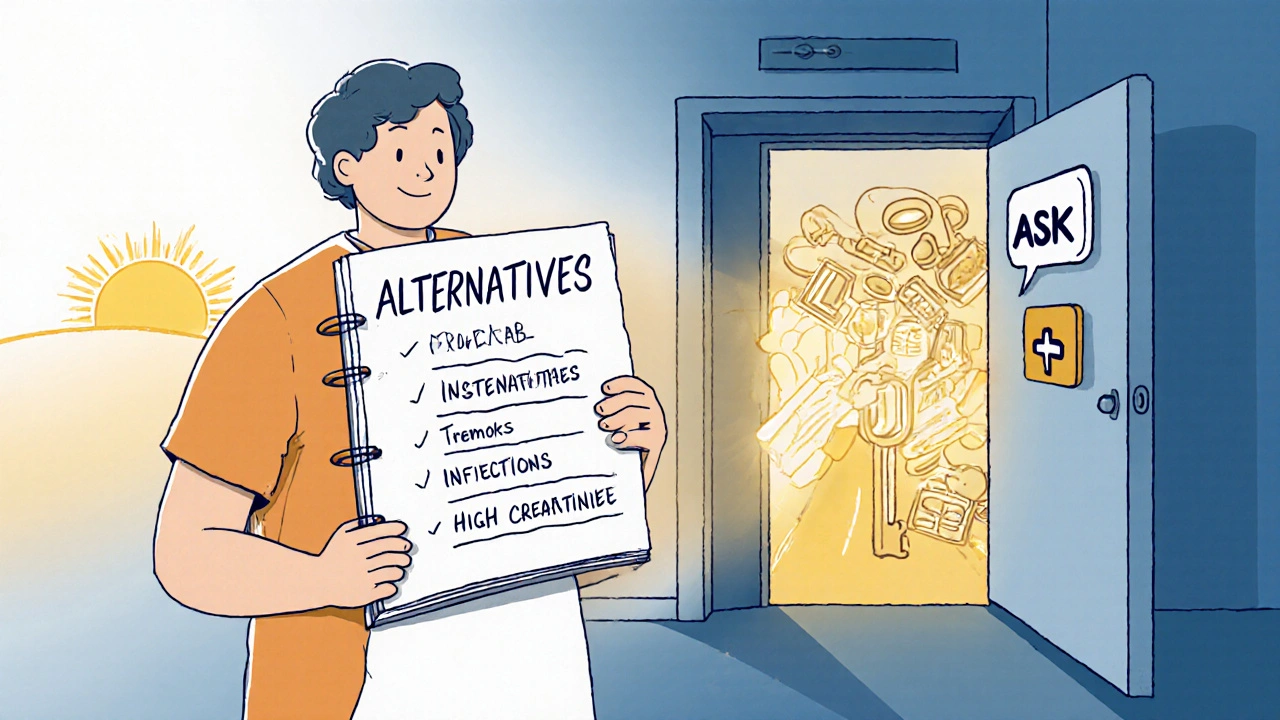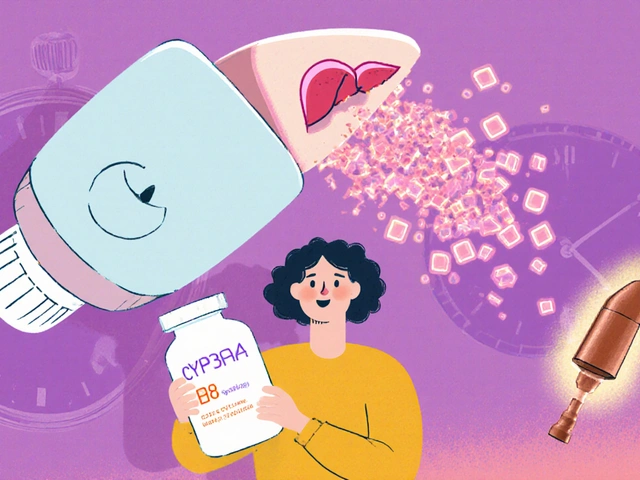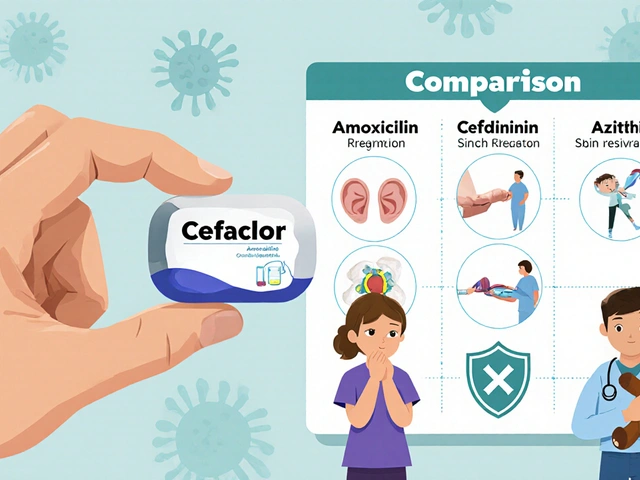After a liver, kidney, or heart transplant, your body doesn’t know the new organ isn’t a threat. It tries to attack it. That’s where Tacrolimus comes in. Sold as Prograf, it’s one of the most common drugs used to stop rejection. But it’s not the only option. And for many people, it’s not the best one - especially if side effects are messing with your life.
Prograf works. It keeps transplanted organs alive. But it also brings high blood pressure, shaky hands, kidney trouble, and a higher risk of infections and even certain cancers. If you’re on it and feeling worse than you did before your transplant, you’re not alone. Many patients switch. Others start on something else entirely. So what are the real alternatives? And when does one make more sense than another?
How Prograf (Tacrolimus) Actually Works
Tacrolimus blocks a protein called calcineurin. That protein tells your T-cells - the immune system’s soldiers - to attack foreign tissue. No calcineurin, no attack. Simple. Effective. But it doesn’t just target the bad cells. It shuts down your whole immune response. That’s why people on Prograf get sick more often. A cold can turn into pneumonia. A cut can get infected. And your kidneys? They take a beating. Long-term use can cause chronic kidney damage, even in people who got a kidney transplant.
Doctors usually start patients on Prograf right after surgery. It’s given twice a day, and blood levels have to be checked weekly at first. Too low? Rejection risk goes up. Too high? Side effects spike. It’s a tightrope walk. And because it interacts with so many foods and other drugs - grapefruit juice, antibiotics, even St. John’s Wort - managing it feels like a full-time job.
Alternative 1: Cyclosporine (Neoral, Sandimmune)
Cyclosporine was the go-to immunosuppressant before Tacrolimus came along in the 1990s. It still works. It’s cheaper. And for some patients, it’s easier to tolerate.
Both drugs block calcineurin, so they work similarly. But cyclosporine doesn’t cause as much nerve damage. Shaky hands and headaches? Less common. However, it’s harder on the kidneys. High blood pressure and gum overgrowth are frequent complaints. Some patients grow thick, swollen gums just from taking it. And it needs to be taken with food - inconsistently - which makes dosing unpredictable.
Studies show that cyclosporine leads to slightly higher rejection rates than Tacrolimus in kidney transplants. But for liver transplant patients, the difference isn’t as big. If you’ve had bad side effects from Prograf but your kidneys are already weak, your doctor might switch you to cyclosporine to give your kidneys a break - even if it means watching your gums closely.
Alternative 2: Sirolimus (Rapamune)
Sirolimus doesn’t touch calcineurin. Instead, it blocks mTOR - a different pathway that tells cells to grow and multiply. That makes it useful for patients who need to reduce kidney damage or avoid certain cancers.
One big reason to switch to sirolimus: it doesn’t harm the kidneys like Tacrolimus does. In fact, some transplant centers use it to help repair kidney function in patients who’ve had long-term Prograf use. It’s also linked to lower rates of skin cancer - a major concern for transplant recipients.
But sirolimus has its own problems. It causes swelling in the legs and ankles. Some people get mouth sores. Cholesterol and triglycerides spike. And it takes weeks to reach steady levels in your blood. You can’t just switch overnight. If you’re on Prograf and want to try sirolimus, you’ll need to overlap them for a while. That means more blood tests, more doctor visits, and more patience.
It’s often used as a late-stage switch - not for new transplants. If you’ve been stable for a year or two and your main issue is kidney decline or skin cancer risk, sirolimus is a strong contender.
Alternative 3: Belatacept (Nulojix)
Belatacept is the newest option. Approved in 2011 for kidney transplants, it works completely differently. Instead of poisoning immune cells, it just puts a brake on their activation. Think of it like removing the ignition key instead of blowing up the engine.
Studies show that over five years, patients on belatacept have better kidney function than those on Tacrolimus. Blood pressure stays lower. Cholesterol improves. And long-term kidney survival rates are higher. It’s the closest thing we have to a “gentler” immunosuppressant.
There’s a catch: you need weekly IV infusions for the first few months, then every two weeks after that. That means regular clinic visits. No home dosing. And it’s expensive - much more than Prograf. Also, it’s only approved for kidney transplants. Not liver or heart.
For younger patients with a living donor kidney, belatacept is becoming a first-line option. For older patients or those with limited mobility, the IV schedule can be a dealbreaker. But if you’re young, active, and want to protect your kidneys long-term, this is the most promising alternative on the market.
Alternative 4: Mycophenolate Mofetil (CellCept) and Mycophenolic Acid (Myfortic)
These aren’t direct replacements for Tacrolimus. They’re usually used together with it. But in some cases, especially if you’re having severe side effects, doctors reduce or even remove Prograf and rely more heavily on mycophenolate.
Mycophenolate stops white blood cells from multiplying. It’s good at preventing rejection without causing as much nerve or kidney damage. Side effects? Mostly stomach upset - nausea, diarrhea, vomiting. Some people can’t tolerate it. But for others, it’s the missing piece that lets them cut back on Tacrolimus.
One study found that kidney transplant patients who switched from Prograf to mycophenolate-only (with low-dose steroids) had similar rejection rates but better kidney function and fewer high-blood-pressure issues. It’s not a full swap, but it’s a smart way to reduce Prograf’s burden.
When to Consider Switching
You don’t switch just because you don’t like the pills. You switch when the trade-off isn’t worth it. Here are the clear signs it’s time to talk to your transplant team:
- Your creatinine levels keep rising - your kidneys are struggling.
- You’re getting frequent infections or shingles outbreaks.
- You’ve developed high blood pressure that won’t respond to medication.
- You have tremors, trouble sleeping, or constant headaches.
- You’ve had skin cancer or pre-cancerous lesions.
- You’re taking more than 3 other medications just to manage Prograf’s side effects.
These aren’t minor annoyances. They’re signs your body is under too much stress. And your immune system isn’t the only thing being suppressed - your quality of life is, too.

What Your Doctor Won’t Always Tell You
Prograf is the default because it’s been around longer. It’s in guidelines. Hospitals stock it. Pharmacies know how to handle it. Alternatives? They’re trickier. Belatacept requires special handling. Sirolimus needs careful titration. Cyclosporine has drug interactions that even some pharmacists miss.
Doctors often stick with Prograf out of habit - not because it’s best for you. If you’re unhappy, ask: “What happens if we try reducing Tacrolimus and adding mycophenolate?” or “Would belatacept be an option for me?” Don’t wait for them to bring it up.
Also, insurance matters. Belatacept costs over $30,000 a year. Prograf is under $2,000. Some plans won’t cover alternatives unless you’ve failed Prograf first. That’s a bureaucratic hurdle, not a medical one.
What’s the Best Choice?
There’s no single answer. It depends on your organ, your age, your kidney health, your lifestyle, and your tolerance for side effects.
Here’s a quick guide:
| Drug | Best For | Biggest Risk | Dosing | Cost (Annual Estimate) |
|---|---|---|---|---|
| Tacrolimus (Prograf) | Most transplants, first-line use | Kidney damage, nerve issues, high blood pressure | Twice daily, oral | $1,500-$2,000 |
| Cyclosporine | Liver transplants, cost-sensitive patients | Severe kidney damage, gum overgrowth | Twice daily, oral (with food) | $1,200-$1,800 |
| Sirolimus | Long-term kidney protection, cancer risk reduction | High cholesterol, mouth sores, swelling | Once daily, oral | $5,000-$7,000 |
| Belatacept | Young kidney transplant patients, kidney preservation | Infusion visits, higher infection risk early on | IV every 1-2 weeks | $30,000+ |
| Mycophenolate | Reducing Tacrolimus dose, GI tolerance | Stomach upset, low white blood cells | Twice daily, oral | $2,500-$4,000 |
If you’re young and got a kidney transplant from a living donor - aim for belatacept. If you’re older and your main problem is kidney decline - try sirolimus. If you can’t afford anything else and your liver is stable - cyclosporine might be your best bet. And if you’re just tired of the side effects, ask about lowering Tacrolimus and boosting mycophenolate.
Final Thought: Your Body, Your Choice
Transplant medications aren’t one-size-fits-all. What worked for your friend might wreck your kidneys. What your doctor recommends might be the easiest option - not the best one for you.
Keep track of your symptoms. Write down your blood pressure, your energy levels, how your hands shake, how often you get sick. Bring that to your appointments. Ask: “Is there another way?”
There are options. You just have to push for them.
Can I switch from Prograf to another drug safely?
Yes, but only under close medical supervision. Switching immunosuppressants requires overlapping doses and frequent blood tests to avoid rejection. Never change your dose or switch on your own. Your transplant team will monitor your drug levels and organ function during the transition.
Does Tacrolimus cause weight gain?
Tacrolimus itself doesn’t directly cause weight gain. But it can lead to high blood sugar and insulin resistance, which may increase appetite and fat storage. Some patients gain weight because steroids - often taken with Tacrolimus - cause fluid retention and increased hunger. Weight gain is more linked to the full regimen than Tacrolimus alone.
Is there a generic version of Prograf?
Yes. Generic tacrolimus is widely available and just as effective as the brand-name Prograf. Many insurance plans prefer generics because they’re cheaper. But not all generics are the same - some patients report differences in side effects. If you switch to a generic and feel worse, tell your doctor. You may need to stick with the brand or try a different generic manufacturer.
Can I take natural supplements with Tacrolimus?
Most natural supplements are unsafe with Tacrolimus. St. John’s Wort, echinacea, garlic, and grapefruit juice can dangerously alter blood levels. Even fish oil and vitamin D can interfere. Always check with your transplant team before taking anything - herbs, vitamins, or teas. What seems harmless can trigger rejection.
How long do I need to take immunosuppressants?
For life. Even if your transplant is working perfectly after 10 or 20 years, stopping immunosuppressants will cause your body to reject the organ. There are rare experimental protocols that try to wean patients off, but they’re only done in clinical trials and aren’t standard care. Lifelong medication is the norm.









